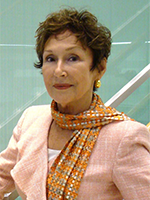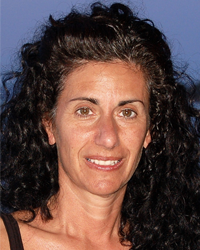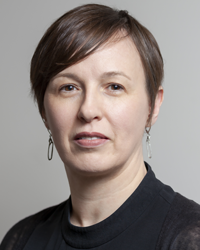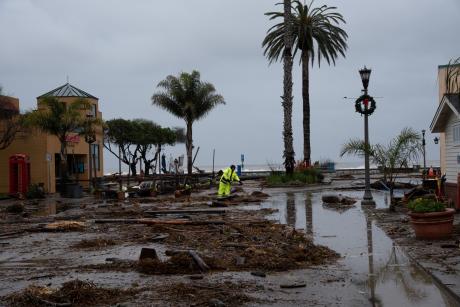Editor’s Note: The John A. Hartford Foundation is collaborating with ASA to advance equity in aging by supporting ASA RISE, a 20-week social justice and leadership program for rising leaders of color in aging, and via the development and dissemination of equity-related, partnership-based thought leadership through ASA’s Generations platform. This blog post is the 14th in that series.
In my role as ASA’s director of Programs & Thought Leadership, I get to proudly lead our effort to reduce the racial leadership gap in the field of aging as program director for ASA RISE. During ASA’s annual On Aging conference in Atlanta, it was my honor to congratulate and celebrate the program completion of the Cohort 2 ASA RISE Fellows—The Disruptors.
We had 15 fabulous Fellows in Cohort 2 who, since October, had been on a transformative personal and professional journey. A component of the ASA RISE experience is to complete a national group project that contributes to thought leadership or innovates service delivery in one of ASA’s five strategic priority areas.
The Disruptors’ project was the result of an innovative collaboration between ASA and the National Council on Aging, with funding from Novo Nordisk—to equip community-based senior centers as intervention sites to better support an equitable approach to healthy aging. Our Cohort 2 ASA RISE Fellows engaged in a liberatory design practicum to develop tools that senior centers can use to plan and deliver a townhall conversation that focuses on equitable access, care and treatment for older adults living with obesity.
Emerging leaders need to see, engage, and act differently in their systems to achieve transformation.
Last week at On Aging 2023, The Disruptors presented the culmination of their team projects across four U.S. metropolitan areas: Atlanta, Chicago, Los Angeles and Washington, DC. Each team employed an equity leadership stance and used virtual and in-person visits with senior center staff and clients throughout the project to understand the equity challenges present in each location. Then they designed tools for townhall conversations to acknowledge and help navigate those challenges.
Health Inequities Reflect Societal Inequities
Why focus on obesity? Obesity rates have risen dramatically in recent decades, nearly doubling among older U.S. adults to include two in every five Americans ages 60 and older, with a disproportionate prevalence in communities and among older adults of color. Obesity is now a leading cause of preventable disease and early death among U.S. older adults. Prolonged obesity across the lifespan increases the risk of chronic disease, disability and early death, along with high healthcare costs and greater odds of needing nursing home care. Furthermore, the impact of obesity is contributing to many of the racial-ethnic health disparities documented among diverse elders.
The magnitude and persistence of racial inequities for the health and well-being of older adults require that we seriously confront the obesity epidemic as a health equity issue. As we learned from the Disruptors’ project, it is untenable to ignore the magnitude of human suffering that racial disparities in health reflect. We need to identify the real and perceived barriers to implementing comprehensive societal initiatives that are necessary to eliminate racial differences in health outcomes. More systematic and sustained attention should be given to how to frame such efforts in ways that resonate with marginalized communities.
Demonstrated most salient in the Disruptors’ work is a reminder that racial inequity is far more than a health issue. Health problems begin with and are exacerbated by so many other factors, from housing to hunger, education to employment. We work so hard on the critical factor of access to healthcare, but we need to address all the reasons why health equity is so elusive to build the needed supports and infrastructure to improve the health of all older Americans.
‘The work of equity is to make the invisible visible.’
At the foundation of ASA RISE’s theory of change is the profound belief that people have the capacity to solve the problems that matter to them. Policies, practices and procedures are all important yet insufficient because people make change, so ASA RISE’s call to action rests on developing leaders equipped with an equity leadership stance to move with greater agency, confidence, skill and knowledge and for them to SEE, ENGAGE, and ACT differently in their systems to achieve this transformation.
Leaders need to SEE the system from a historical, sociopolitical and structural standpoint to better understand how things got to be the way they are. This is necessary because part of the work of equity is to make the invisible visible.
They need to ENGAGE in deep listening and hear the stories of people's lived experiences and their dreams. These both become data that can inform an organization’s aspirations, decisions and actions. It also means co-building and codesigning. It’s power with, not power over, people. Engaging isn’t buy-in—it’s about a shared understanding of the issues and co-creation of the solutions.
Lastly, leaders need to ACT differently and use design methods (e.g., liberatory design) to probe the system, define the problem, and experiment, while simultaneously noticing and reflecting on the impacts of those changes on people and outcomes.
In ASA RISE, equity leadership acts as a catalyst—not an end point. This work starts with people because leadership is required to make progress. If we are truly to become a more equitable and just field—and a liberatory field where everybody belongs—then the culture and structures of our organizations and workplaces will necessarily need to evolve and change. Courageous leadership is about thinking and seeing differently, engaging differently, and acting differently!
Congratulations Disruptors! You are now ASA RISE Alums, joining the Accomplices and Co-Conspirators from Cohort 1, as the courageous leaders the field of aging desires and needs!
Patrice Dickerson is ASA’s director of Programs & Thought Leadership. Applications for Cohort 3 of ASA RISE open on May 1.
Photo caption: Cohort 2 ASA RISE Disruptors at On Aging 2023. Dickerson, center, in a blue suit.









